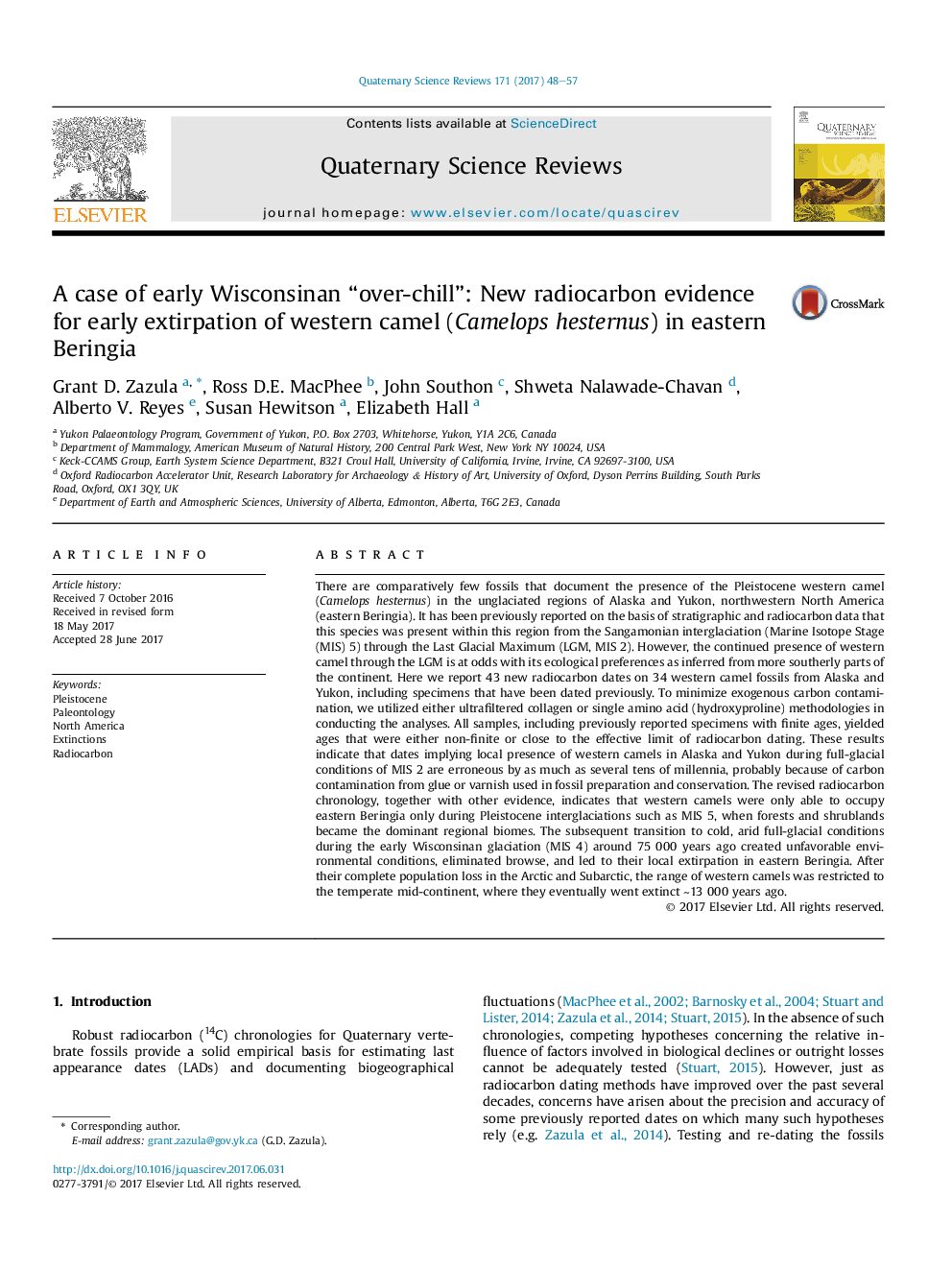| Article ID | Journal | Published Year | Pages | File Type |
|---|---|---|---|---|
| 5786586 | Quaternary Science Reviews | 2017 | 10 Pages |
Abstract
There are comparatively few fossils that document the presence of the Pleistocene western camel (Camelops hesternus) in the unglaciated regions of Alaska and Yukon, northwestern North America (eastern Beringia). It has been previously reported on the basis of stratigraphic and radiocarbon data that this species was present within this region from the Sangamonian interglaciation (Marine Isotope Stage (MIS) 5) through the Last Glacial Maximum (LGM, MIS 2). However, the continued presence of western camel through the LGM is at odds with its ecological preferences as inferred from more southerly parts of the continent. Here we report 43 new radiocarbon dates on 34 western camel fossils from Alaska and Yukon, including specimens that have been dated previously. To minimize exogenous carbon contamination, we utilized either ultrafiltered collagen or single amino acid (hydroxyproline) methodologies in conducting the analyses. All samples, including previously reported specimens with finite ages, yielded ages that were either non-finite or close to the effective limit of radiocarbon dating. These results indicate that dates implying local presence of western camels in Alaska and Yukon during full-glacial conditions of MIS 2 are erroneous by as much as several tens of millennia, probably because of carbon contamination from glue or varnish used in fossil preparation and conservation. The revised radiocarbon chronology, together with other evidence, indicates that western camels were only able to occupy eastern Beringia only during Pleistocene interglaciations such as MIS 5, when forests and shrublands became the dominant regional biomes. The subsequent transition to cold, arid full-glacial conditions during the early Wisconsinan glaciation (MIS 4) around 75Â 000 years ago created unfavorable environmental conditions, eliminated browse, and led to their local extirpation in eastern Beringia. After their complete population loss in the Arctic and Subarctic, the range of western camels was restricted to the temperate mid-continent, where they eventually went extinct â¼13Â 000 years ago.
Related Topics
Physical Sciences and Engineering
Earth and Planetary Sciences
Geology
Authors
Grant D. Zazula, Ross D.E. MacPhee, John Southon, Shweta Nalawade-Chavan, Alberto V. Reyes, Susan Hewitson, Elizabeth Hall,
